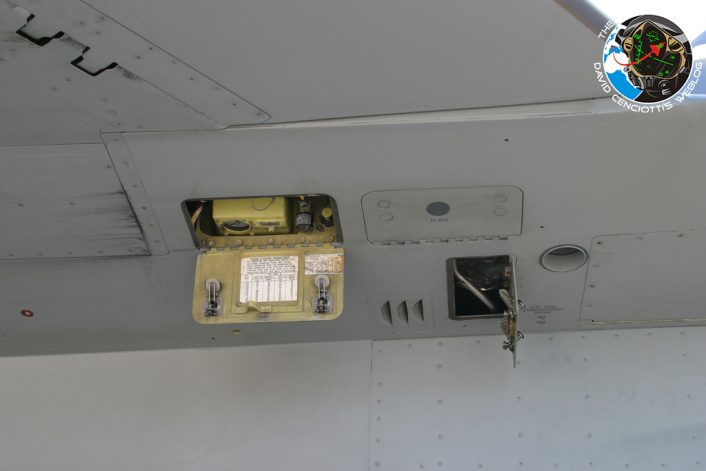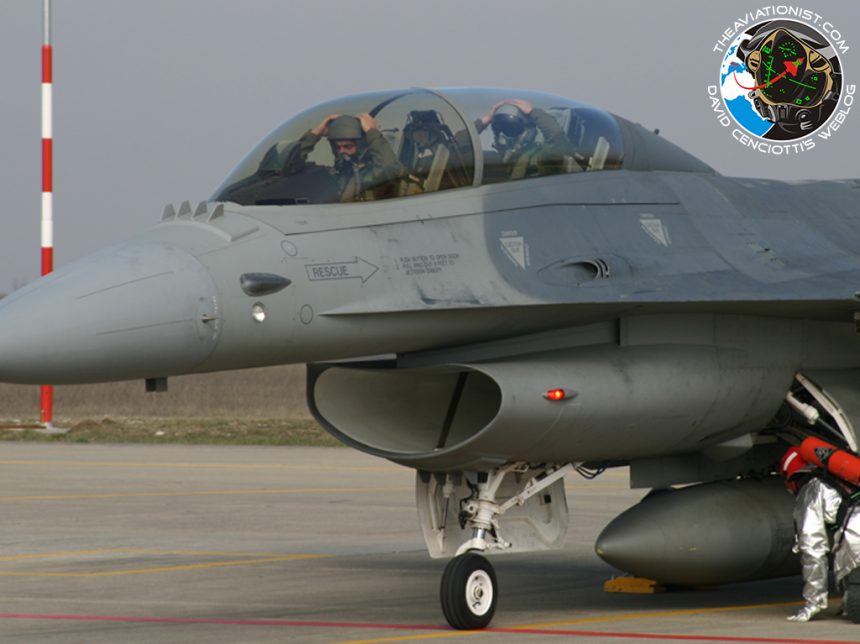The recent crash of a South Dakota Air National Guard F-16 into a warehouse near March Air Reserve Base highlights once again the risk associated with Hydrazine leakes.
As already reported, on May 16, 2019, an F-16 Fighting Falcon of the South Dakota ANG crashed into a large warehouse near March Air Reserve Base, California. The pilot, belonging to the California ANG, safely ejected from the aircraft.
According to a U.S. Air Force spokesman, the F-16, that was carrying live ordnance, had a hydraulic failure that led to the crash: rounds and missiles were secured and disposed but the incident left 13 people injured: three people remain in the hospital and are stable; no one sustained life-threatening injuries, while some patients went through a decontamination process because of fume exposure and debris, CNN reported.
In fact, the impact site of a crashed F-16 can be extremely dangerous and one of the main hazards is Hydrazine (H-70, 70% Hydrazine and 30% water). Hydrazine is a colorless liquid that feeds the electrical systems and the EPU (Emergency Power Unit) as part of a backup power system on the aircraft. When activated, the unit provides emergency power for the aircraft’s systems in the case of an electrical failure: in case of flame-out, emergency power generated by the EPU is designed to give pilots the time they need to land the aircraft safely. And, the EPU is fired up by Hydrazine.
Hydrazine is a highly toxic and inflammable chemical that can be mistaken for water but smells more or less like ammonia. Depending on the duration of the exposure, H-70 vapors can be extremely dangerous for the human health. According to the U.S. Air Force, “vapors can cause irritation to the eyes and respiratory tract. Short term exposure may cause tremors, while prolonged exposure may cause damage to the liver and kidneys, possibly convulsions or death.”
As you may understand, the toxicity of H-70 is such that special procedures must be used to manage crashes as well as in-flight emergencies that involved the EPU or hydrazine leaks. Each squadron equipped with F-16s must be able to respond to emergencies when use of the H-70 has been indicated, either by the pilot, or the small indicators located in multiple locations on the aircraft. Periodic training is carried out to ensure the readiness of the response teams in case of this type of emergency.
As explained in a previoust post, back in 2004, I visited the 5th Stormo (Wing) based in Cervia, Italy, one of the Italian Air Force units operating the F-16 on lease as gap fillers between the F-104 and Eurofighter Typhoon. During the visit, I had the opportunity to see a response team at work during a hydrazine emergency. The procedure foresaw the management of the eventual leak, the removal of the crew from the aircraft and the subsequent decontamination.
Let’s see how the procedure was carried out, as it was the same used by the U.S. Air Force and other air arms flying the Viper.
Here’s the scenario: an aircraft has just declared an emergency after experiencing an engine flame-out, failure that provokes the activation of the hydrazine-propelled EPU. As soon as the aicraft lands, it is taxied towards one of the selected decontamination zones, located next to the northern threshold of the 12/30 runway in Cervia. In order to prevent the dispersion of eventual vapors of hydrazine, the pilot moves the aircraft against the wind and waits for the arrival of the first firefighting team. This first team is composed by an On-Scene Commander (OSC) and two firefighters.
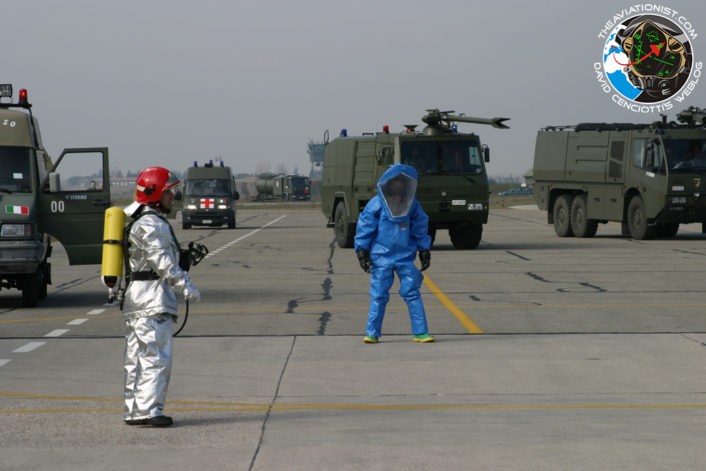
The OSC moves in front of the aircraft, in a position from which he can direct and manage the operations of the entire team and communicate with the pilot using a language made only of gestures.
After receiving the go-ahead signal from the OSC, the firefighter operator positioned on his right side, following a path purposely traced to prevent whichever risk posed by the aircraft intake, approaches the left wing of the F-16 and, passing under the fuel tank, inserts the spins to the undercarriage and gun.
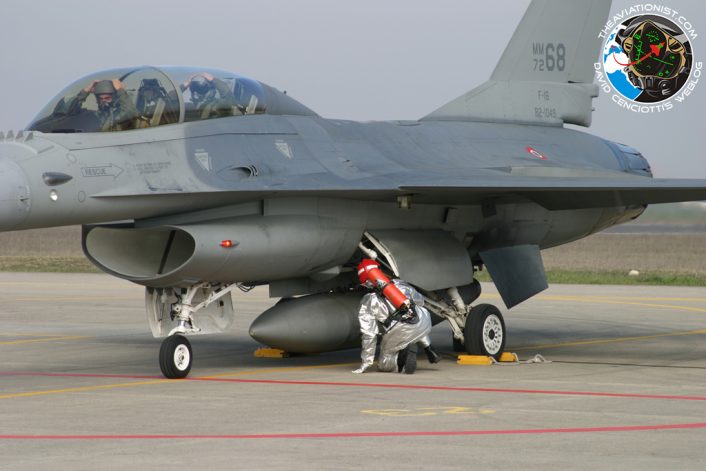
After completing the operation, the OSC signals the pilot to turn the engine off, operation that allow the fireman to approach the cockpit and release the ladder used by the crew to abandon the aircraft. Before leaving the F-16, the crew has to wear the mask to prevent toxic vapor inhalation.
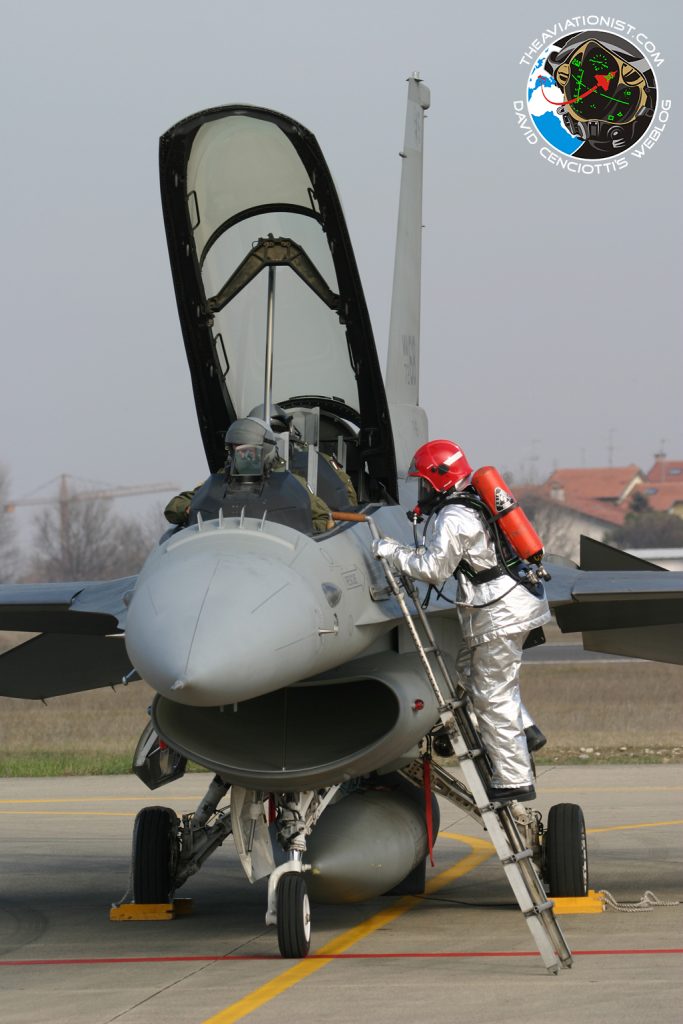
As soon as the crew is distant and safe, the fireman on the left of the OSC, wearing a particular protecting cover (Level B), approaches the aircraft next to the hydrazine tank (located at the connection between the fuselage and the leading edge of the right wing). This operator has to check eventual leaks that can be revealed by stains on the ground caused from liquid spillage.
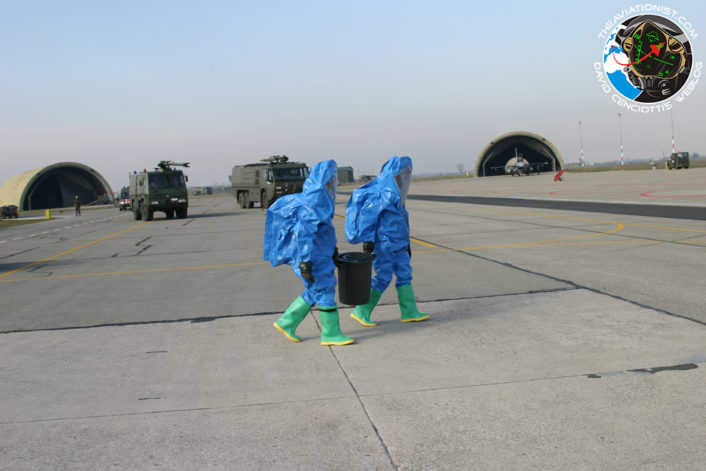
As soon as the first assessment has been completed, the first team is replaced by a “response team hydrazine” composed by 2 Italian and 1 American operator, equipped with special overalls (Level A, since risk of contact with the liquid is higher), that clear the leak along the track followed by the aircraft from the runway to the parking area.
